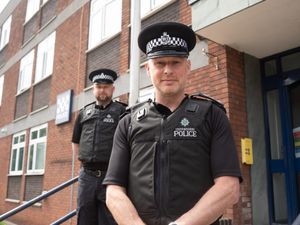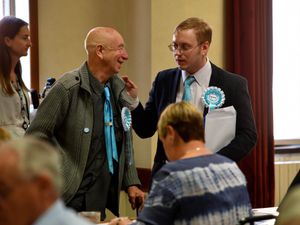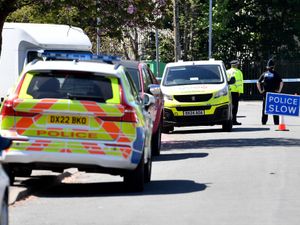Spot the difference: Twinning tales of Midlands towns
It began as a way to improve relations between Great Britain and the rest of the world in the turbulent years after the Second World War.
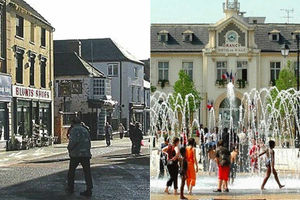
And decades later, families across the West Midlands have built up lifelong friendships with residents in their communities' 'twin towns' hundreds of miles away.
Some of the pairings can be baffling, while others are borne out of similar industrial heritages or even two places having the same name.
But they have given people a chance to visit areas they might otherwise never have seen, and learn about cultures that were previously a mystery to them. One of the longest running in the country is the Willenhall partnership with Drancy on the outskirts of Paris.
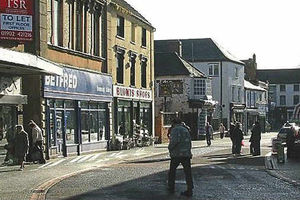
On the face of it, Willenhall and Drancy, near Paris probably have the least in common of all the twin towns in the Midlands.
A once thriving industrial heart of the Black Country now struggling with empty shops and unemployment, and a thriving, picturesque town on the edge of Paris.
But over the last 55 years the two communities have built up strong links that organisers hope will continue for decades to come.
Drancy is known for a dark period of its history when the Nazis set up an internment camp for Jews there in the Second World War.
But civic leaders have since made a concerted effort to move the town forward, with modern buildings contrasting with the 19th century art nouveau structures.
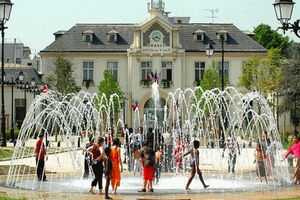
Twinning factfile:
Population
Willenhall: 40,000 - Drancy: 66,000
Average summer temperature
Willenhall: 21°C - Drancy: 25°C
Landmarks
Willenhall: The clock tower in the town's Market Place - Drancy: Memorial for the Jews imprisoned in a Nazi internment camp during the Second World War
Industry
Willenhall: Lockmaking - Drancy: Engineering – though residents often work outside of the area
For 55 years, people from both towns have visited each other's homes and staged sightseeing holidays.
And a centrepiece of the annual exchanges is an art exhibition in both towns featuring work by their friends from overseas.
The display has been held at The Crossing at St Paul's for the last 10 years, with Willenhall artists' work also being exhibited in Drancy.
Twinning committee chairman James Mills, who has been involved in the group for 32 years, said the annual holidays abroad were a highlight of the year for many members.
He said: "You get a great mix of people and you get to see different ways of life, and an insight into the way traditional French families live. It has given people the opportunity to go on trips they wouldn't normally have gone on."
The once-popular children's exchange was scrapped as more families went on foreign holidays themselves, but more than 20 people still embark on the annual holidays.
France is a common location for twin towns, as it has relatively easy transport links to England and is not too much of a culture shock for visitors.
Sandwell was twinned with the Parisian suburb of Le Blanc Mesnil 30 years ago and a series of events are being staged to celebrate the anniversary this year.
Visits take place in alternate years, with French residents visiting Sandwell next year. Organisers give members the chance to learn French but say it is not essential, with twinning association chairman Pat Perry saying: "Part of the fun for some could be to learn about the French language and traditions – it is a fantastic opportunity to make friends with French people."
The group also has monthly social events, with guest speakers in the winter and outdoor activities such as boules in the summer.
Mrs Perry said Le Blanc Mesnil was 'very similar' to Sandwell with bustling areas of shops and businesses. But there is also rural tranquility with water parks and countryside that can feel a million miles away from the Black Country in the hot summer months.
The group is looking for new members and Mrs Perry has urged families to broaden their horizons. She said: "Exchange visits usually last for five days, two of which are spent with host families.
"During the visit, various excursions and activities are organised, and there is also free time to spend with the host families."
When civic leaders in Wheaton Aston were looking for a community to twin with, they did not have simple transport links in mind.
Wheaton in Illinois is 3,847 miles – or a 10-hour flight – from South Staffordshire. So exchange visits between the two sets of residents are altogether rarer and take much greater planning.
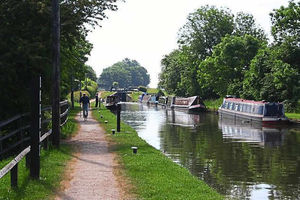
While it is hard to fathom how some twinning links came to pass, it is not hard to see the inspiration behind Wheaton Aston's.
The South Staffordshire village is paired with Wheaton in Illinois, more than 3,000 miles away in America.
And the connection is not as far-fetched as you might think.
Wheaton in the US is one of the 25 highest earning cities in the country with the residents proud of its village-like atmosphere despite its 50,000-plus population.
Situated 25 miles west of Chicago and Lake Michigan, Wheaton is also defined by vast expanses of land and the busy train line that runs through it, linking it to the country's industrial and economic hubs.
Wheaton has rapidly expanded since the 1950s, although its population growth has slowed down since the early 1990s, as the city has become increasingly landlocked. It took its name from two brothers who settled there in the 1830s.
The sale of alcohol in shops, bars and restaurants was banned there until 1985.
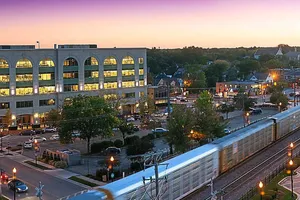
Twinning factfile:
Population
Wheaton Aston: 2,500 - Wheaton, Illinois: 53,000
Average summer temperature
Wheaton Aston: 21°C - Wheaton, Illinois: 28°C
Landmarks
Wheaton Aston: Shropshire Union Canal - Wheaton, Illinois: Wheaton Centre
Industry
Wheaton Aston: Farming - Wheaton, Illinois: Financial
There are certainly huge differences between the two Wheatons.Wheaton, Illinois, has a population of more than 50,000 and most people working in nearby Chicago, whereas the rural parish including Wheaton Aston, Lapley and Stretton is home to less than 3,000.
It began in 1990 when villagers Ray and Diana Cowley, supported by the twinning association, established the relationship. Since then villagers have communicated with their American 'twins' by letter, email and social media.
YouTube videos have also been created and shared.
The Mayor of Wheaton, Illinois, Mike Gresk and his wife Kathleen visited the village last month while they were on holiday in England, taking tea and cake at St Mary's Church with villagers and have a pub lunch at the Hartley Arms.
Twinning associations are often more popular in smaller villages than towns or cities – and organisers believe that is because they often have a greater sense of community. Kinver's has been one of the most active in the Midlands in recent years, with more than 30 people going on exchange trips to Mer in the Loire Valley in France every two years.
Residents from the small, mainly agricultural area have always settled in quickly in Kinver since the partnership was set up 26 years ago.
Twinning group chairman Heather Pickford said: "They love it – they see Kinver as being typically English with its timber-framed houses and high street, and everyone is always positive.
"My aim is to encourage families to develop their own links between themselves so they can see their friends at any time of year, not just when our trips are organised." The original organisers of the Kinver partnership intended to find a town in Germany but, when Mer was recommended to them, they felt it was a perfect match.
But Cannock community chiefs did opt for Germany after being swayed by the canal network in Datteln, near Dortmund, which is the scene of a popular boating festival each year.
Since 1971 there have been regular visits, culminating in 1996 with spectacular celebrations at the Datteln Kanalfest and the Cannock Carnival to mark the 25th anniversary.
They may be seen by some as a relic of the past, but residents of twin towns say they have been given the chance to discover new cultures and make friends for life.
Mrs Pickford added: "It is more popular than ever in Kinver and I hope that continues for many years to come."
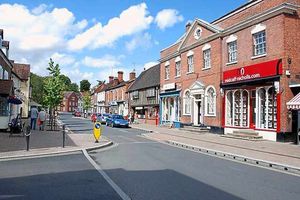
Kinver is often seen as a quintessentially English village and a sanctuary from the built-up towns and cities which lie nearby.
And its French twin town of Mer, about a mile from the River Loire, is also a popular retreat for families wanting to escape the hustle and bustle of daily life.
With its quaint cottages in the hills contrasting with the ornate chateaux at Chambord and Blois that form part of the Loire world heritage site, Mer has become a home from home for many of Kinver's villagers.
The association was set up in 1987 and more than 25 years later is more active than ever, with trips being organised every year.
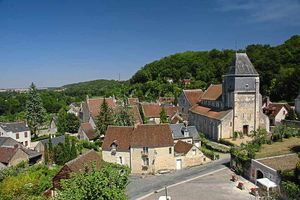
Twinning factfile:
Population
Kinver: 7,000 - Mer: 5,900
Average summer temperature
Kinver: 21°C - Mer:25°C
Landmarks
Kinver: The Rock Houses, the sandstone caves at Kinver Edge - Mer: River Loire and the castles of Beaumont and Chantecaille
Industry
Kinver: The Kinver Brewery - Mer: Agriculture and logistics
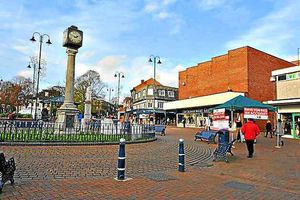
They are more than 520 miles apart but for 34 years strong links have been forged between Cannock and Datteln in Germany.
The small town on the North Rhine lies at the heart of Germany's canal network, with a waterways festival being one of the highlights of the year as boats gather on the junction of four canals.
The mining heritage common to both towns has formed one of the strongest bonds but other groups have also taken part in regular exchanges.
While Cannock has suffered from shop closures, the number of empty stores has fallen by 25 per cent. And Datteln is blessed with a thriving centre full of independent traders.
Every year members of the twinning groups visit each other's towns to see old friends and introduce new members to the local sights.
Choirs and orchestras, football and rugby teams, pigeon racing and amateur radio clubs are just some of the organisations to have visited Germany over the years.
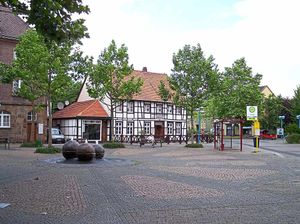
Twinning factfile:
Population
Cannock: 29,000 - Datteln: 35,000
Average summer temperature
Cannock: 21C - Datteln: 24C
Landmarks
Cannock: Cannock Shopping Centre - Datteln: Canal network
Industry
Cannock: Automotive parts - Datteln: Tourism
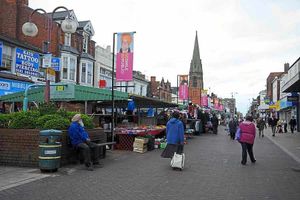
The borough of Sandwell is celebrating 30 years of being twinned with Le Blanc Mesnil, a town six miles north east of Paris.
And organisers say joining the twinning association is a great way to learn about different cultures and make new friends.
Over the past three decades, regular exchange visits have been organised where members of the twinning groups stay in each other's homes.
Le Blanc Mesnil is quieter and more rural than Sandwell, with more than 80 acres of parkland, but also has busy, built-up areas after a huge revamp over the last 60 years when nearly half of the city was wrecked during the Second World War.
Crowds of families flock to public water features and swimming pools during the hot summers when temperatures often reach 30°C.
Its name is interpreted by some as a reference to the houses of Le Blanc-Mesnil which were whitened due to the flour dust coming from the windmills located there in ancient times
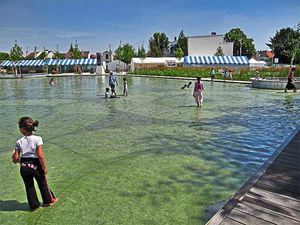
Twinning factfile:
Population
Sandwell: 309,000 - Le Blanc Mesnil: 51,220
Average summer temperature
Sandwell: 21°C - Le Blanc Mesnil: 25°C
Landmarks
Sandwell: The Hawthorns, Baggies' home - Le Blanc Mesnil: Town hall
Industry
Sandwell: Steelwork - Le Blanc Mesnil: Building

